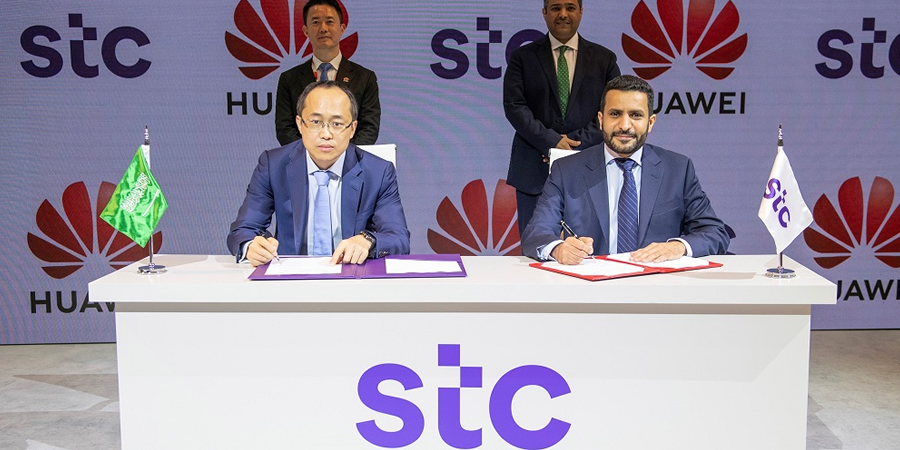stc and its strategic partner Huawei signed a Memorandum of Understanding (MoU) to co-operate towards sustainable development, green initiatives, and social development, while creating a better-connected nation that bridges the digital divide.
The agreement was signed by SVP of corporate affairs in stc Abdullah Al-Kanhel and KSA Head in Huawei Sun Xiaofeng at the Mobile World Congress 2021 in Barcelona, in presence of stc Group CEO Olayan M. Al-Wetaid and Huawei President of ME Region Charles Yang.
Under the arrangement, the two brands adopt global best practices in sustainable development to set new benchmarks for responsibility in the ICT sector. The initiative is in line with Saudi Arabia’s march towards the UN Sustainable Development Goals (SDGs). It also supports the Saudi Green Initiative and Middle East Green Initiative, twin roadmaps launched by the Kingdom’s Crown Prince HRH Prince Mohammed bin Salman to rally the Middle East region in confronting climate change.
The Saudi Green Initiative sets out a blueprint to raise vegetation cover, reduce carbon emissions, combat pollution and land degradation, and preserve marine life. It calls for the planting of 10 billion trees in the Kingdom over the coming decades — the equivalent of rehabilitating roughly 40 million hectares of degraded lands. The Initiative also draws an ambitious map for reducing carbon emissions by generating 50% of the Kingdom’s energy from renewables by 2030.
Under the MoU, both parties will cooperate to enhance stc’s sustainable development efforts within the Kingdom. This includes upgrading multiple existing sites while coupling them with solar panels to generate renewable energy and decrease their carbon footprint. Huawei will also take steps to reduce the carbon footprint of its components within the stc network.
The agreement also prioritizes connectivity as a key element of equitable social development. stc and Huawei will expand stc’s network into rural areas to improve digital inclusion and give more people access to connectivity.










